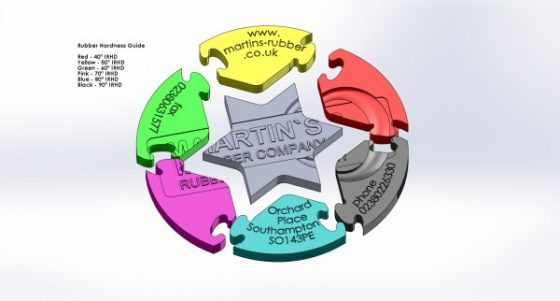International Rubber Hardness Scale

The irhd international rubber hardness degrees instrument has a spherical indentor which indents the sample under a minor and major load.
International rubber hardness scale. Hardness is one of the most widely measured properties used to characterise rubber. When comparing two materials shore hardness offers a reference point and there are 12 different scales that are used for measuring a range of substances. There are other shore hardness scales such as shore o and shore h but they are rare within the plastics and rubber industry. The hardness of seal materials such as rubbers plastics and elastomers are measured in units of shore or irhd international rubber hardness degrees.
Determining the hardness of rubber with an irhd meter. The spring loaded meter gives shore a values. A number of instrument types exist for both the irhd micro dead load and shore a scales are most commonly used for rubber. The readings range from 30 to 95 points.
If it does not penetrate at all then the durometer is 100 for that scale. 30 shore a is much softer than 80 shore a. The differential indentation depth is measured and tabulated to read directly in irhd degrees. Thus if you need a rubber or o ring durometer that feels like a running shoe sole review our rubber hardness chart below then pick shore 70a.
In europe the iso 48 standard and the irhd unit are often used to determine hardness. The irhd m micro is mainly used where the test material has a standard thickness of 2 mm. The final value of the hardness depends on the depth of the indenter after it has been applied for 15 seconds on the material. A rubber durometer of shore 70a is the most commonly chosen material hardness for all applications.
The main advantage of the irhd m method is that the hardness of the rubber can also be measured on the end. The international rubber hardness degrees irhd scale has a range of 0 to 100 corresponding to the elastic modulus of 0 0 and infinite 100 respectively. The international rubber hardness degrees irhd scale has a range of 0 to 100 corresponding to elastic modulus of 0 0 and infinite 100 respectively. If the indenter penetrates 2 54 mm 0 100 inch or more into the material the durometer is 0 for that scale.
The shore a scale is used for softer rubbers while the shore d scale is commonly used for harder ones. The reading from a dead load hardness meter is called international rubber hardness degrees irhd. The hardness is measured by the depth of indentation caused by a rigid ball under a spring load or dead load the indentation being converted to hardness degrees on a scale ranging from 0 to 100. The shore a scale is the most prevalent in the united states.
The measurement is made by indenting a rigid ball into the rubber specimen. The standard test method conducted involves pressing a piece of rubber with a known force for a given time and measure how much the rubber indents in that time.












































